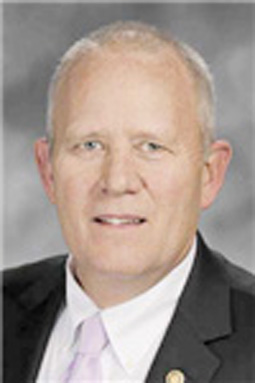
I hope this finds everyone in the 125th district doing well and gearing up for 2022!! It is great to be back in the Capitol and starting a new session! There are several priorities that will take the stage first, and the first will be to draw a federal congressional map. There are several suggestions out there and starting next week we will be debating them. Other items that we will try and pass are Initiative petition reform, voter I.D. and voter reform and agricultural issues, to name a few! As always, feel free to reach out and contact me for any help from Jefferson City!
2022 Legislative Session Begins
Lawmakers returned to the State Capitol Building Wednesday, January 5 for the start of the 2022 legislative session, which is officially the Second Regular Session of the 101st General Assembly. House members returned to Jefferson City with a current split of 110 Republicans, 49 Democrats, and 4 vacant seats. On the first day of session, two Republican members announced their resignations to pursue other interests. The resignations drop the total number of Republicans in the House to 108 members, which is one vote short of a veto-proof majority.
Leading up to the start of the session, members have pre-filed bills at a near-record pace. Pre-filing began Dec. 1 and ended January 4. In that period of time House members pre-filed 770 pieces of legislation. That number is significantly more than the 688 pre-filed bills for the 2021 session, and just six bills short of the pre-filing record of 776 that was set in 2020.
Missouri Legislative Leaders Release Proposed Congressional District Map (HB 2117)
Before the new year began, the respective chairs of the Missouri House Special Committee on Redistricting and Senate Select Committee on Redistricting jointly released their proposed changes to Missouri’s congressional district map. The map, which is treated as a legislative bill, was filed as HB 2117.
The proposed congressional map balances several required criteria including compliance with the Missouri and U.S. Constitutions as well as the Voting Rights Act. The map’s districts are compact, contiguous, and equal in population. The districts adhere to the doctrine of “one person, one vote” and have preserved the cores of each existing congressional district to the greatest extent possible.
“This is a fair and constitutional map with common-sense boundaries that everyday Missourians can recognize,” said the chair of the Senate Select Committee on Redistricting. “This map, which must be passed by both the House and Senate, is also drawn to achieve the greatest amount of consensus possible.” He added, “My House counterpart and I chose to make this joint announcement to emphasize the great care that went into drawing a map we were confident could survive legislative, judicial, and public scrutiny.”
The chair of the House Special Committee on Redistricting said, “The task of creating this congressional district map required balancing the legislative process while maintaining compactness, contiguity, equal population, and preserving the existing districts’ core identities. I look forward to working with my House and Senate colleagues to deliver HB 2117 to Governor Parson for his signature without delay.” Both congressional and state legislative districts are redrawn every ten years upon the completion of the census. Missouri’s congressional districts are drawn by state legislators and state legislative districts are drawn by independent, bipartisan, citizen commissions. The 2021 redistricting process has been compressed due to the COVID-19 pandemic and technical delays by the U.S. Census Bureau.
Governor Parson Ends State of Emergency
As 2021 came to a close, Gov. Mike Parson announced that Missouri’s COVID-19 related State of Emergency would expire and not be renewed on December 31. Parson first issued an Executive Order (EO) declaring a State of Emergency due to COVID-19 on March 13, 2020. Parson said, “Thanks to the effectiveness of the vaccine, widespread efforts to mitigate the virus, and our committed health care professionals, past needs to continue the state of emergency are no longer present. Over the last 22 months, we have coordinated with local, state, and private partners to mitigate COVID-19 and work towards returning to normalcy. We all now know how to best fight and prevent serious illness from this virus. The State stands ready to provide assistance and response, but there is no longer a need for a state of emergency.”
“In Missouri, we never had mandates or forced lockdowns,” said Parson. “The main focus of our state of emergency was to provide regulatory flexibility to support and assist Missourians, health care facilities, and businesses and coordinate a COVID-19 response that saved lives and livelihoods. We encourage all Missourians to consider COVID-19 vaccination and to stay diligent, but we can work together to fight COVID-19 while living our normal lives. It is time to take this final step and move forward as a state.”
Gov. Parson emphasized that the best method to prevent serious illness from COVID-19 is vaccination, and more and more Missourians continue choosing to get primary and booster vaccinations. In the month of December alone, more than 565,000 doses of vaccine were administered and 42 percent were part of a primary vaccine series. The governor noted that nearly 94 percent of Missourians 65 and older, the most vulnerable, have received at least one dose. More than 73 percent of Missourians 18 and older and over 62 percent of all Missourians have chosen to initiate vaccination.
State Representative Jim Kalberloh
District 125



Facebook Comments